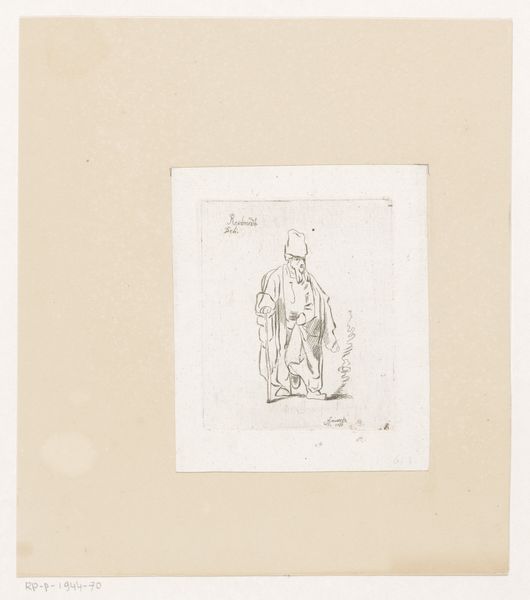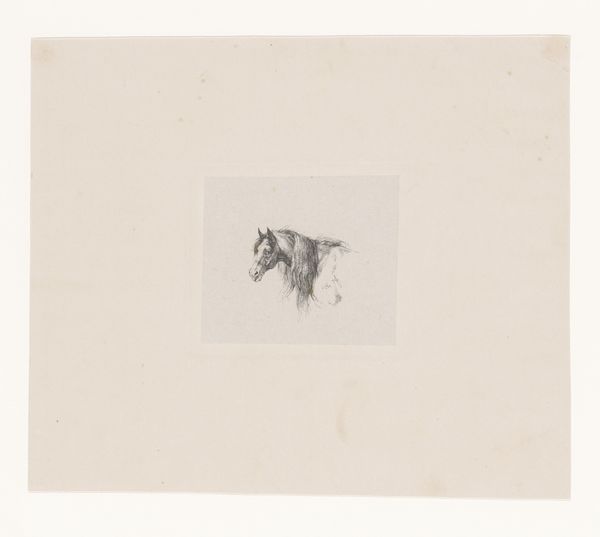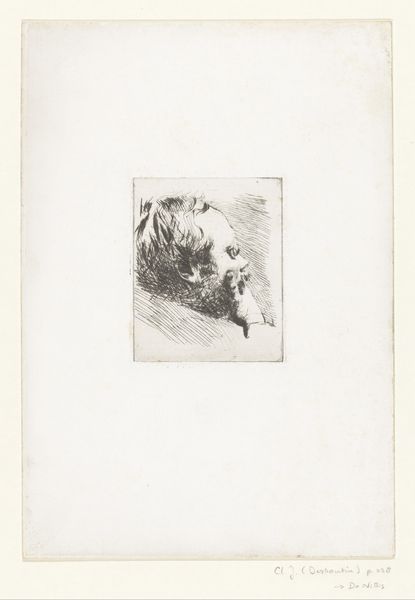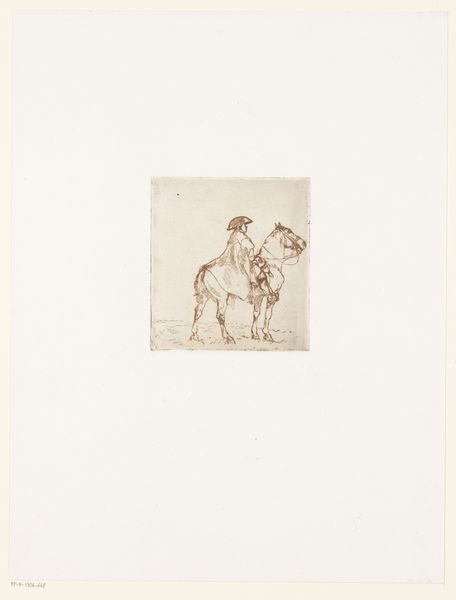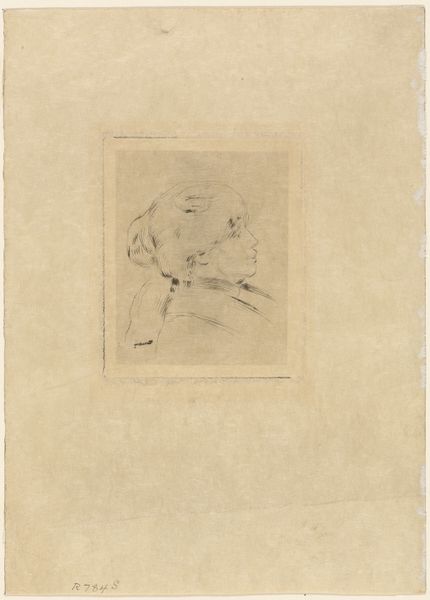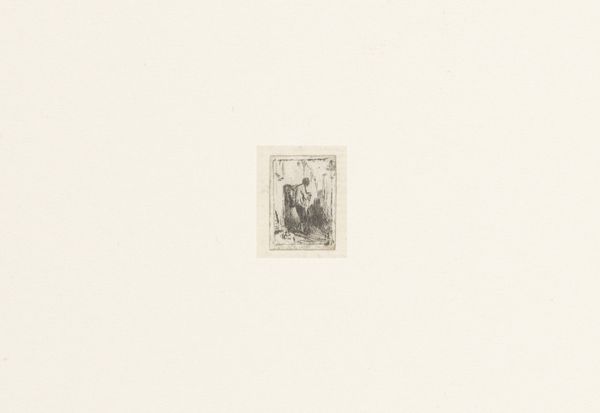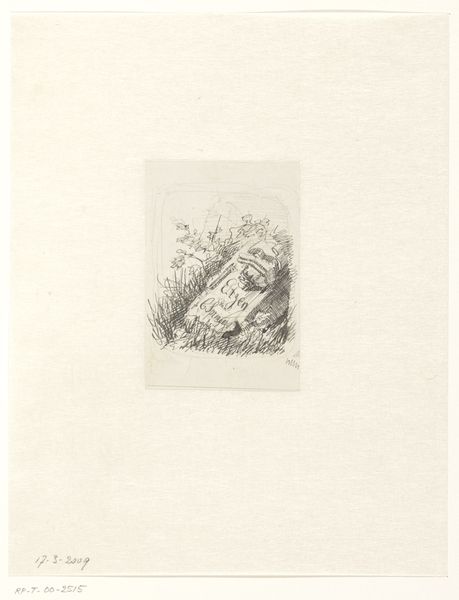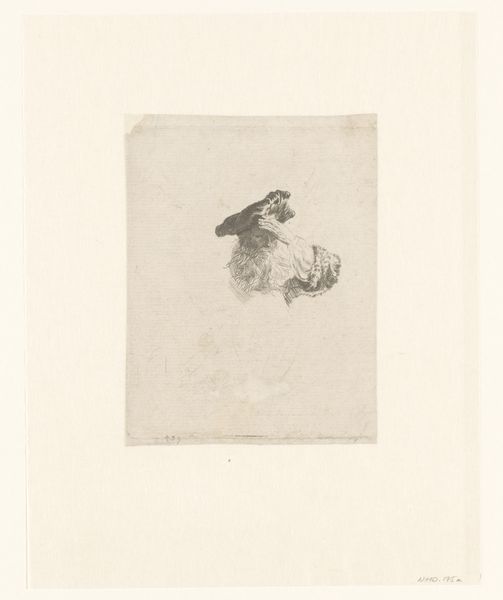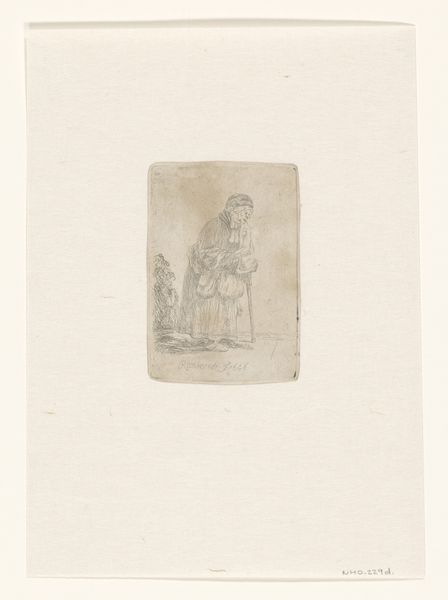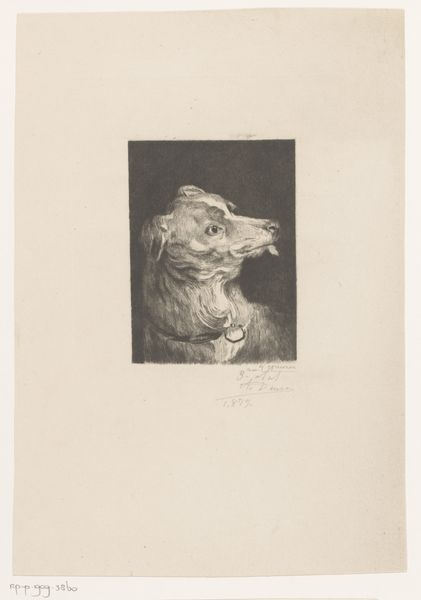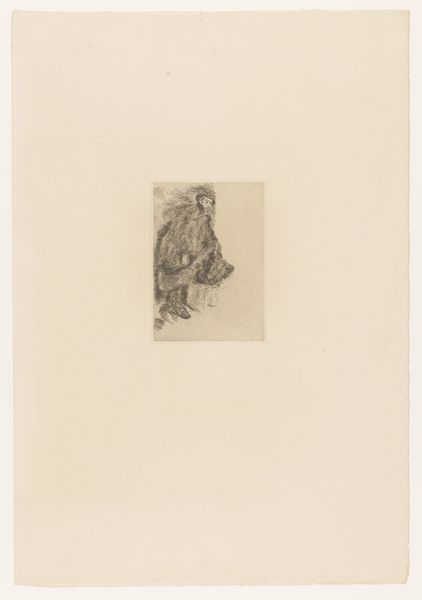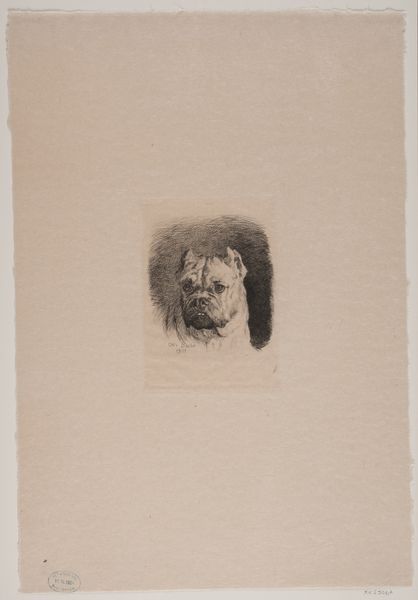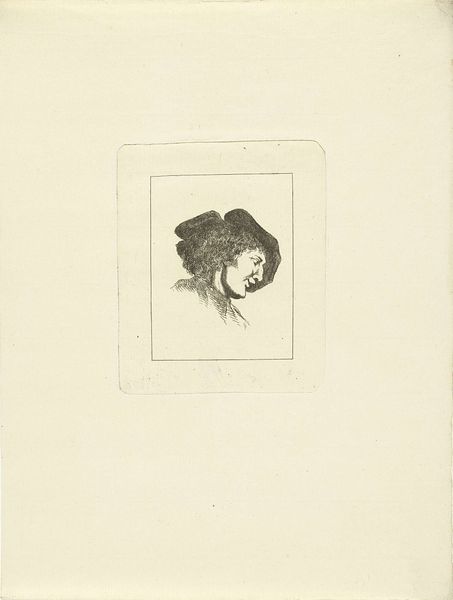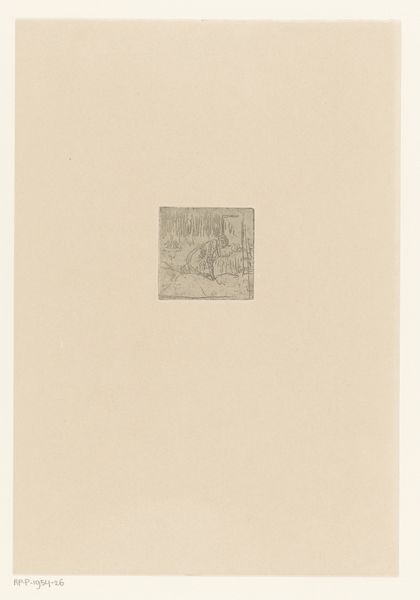
drawing, print, etching
#
portrait
#
drawing
#
still-life-photography
#
animal
# print
#
etching
#
dog
#
realism
Dimensions: height 70 mm, width 64 mm
Copyright: Rijks Museum: Open Domain
Curator: Today, we're examining "Head of a Dog," an 1859 etching by Léopold Flameng. What's your first impression? Editor: I'm immediately struck by the dog’s gaze, it’s rendered with such melancholic softness through incredibly sparse means. The starkness of the etching creates a tender moment. Curator: Yes, the lines are remarkably economical, wouldn't you agree? Observe how the cross-hatching around the dog’s eyes suggests depth and emotion with so few marks. It’s a masterclass in suggesting form through minimal composition. Editor: I find it fascinating how Flameng used the etching process to translate the texture of the dog’s fur. Think of the skilled labor involved, layering acid to achieve that nuanced tonality. It raises questions about the social standing of animal representation during this period, and whether this could be classified as commissioned work for a wealthy family? Curator: An interesting point. In terms of form, look at the placement within the frame. The dog occupies the lower half of the pictorial space, the emptiness above draws the eye, forcing you to contemplate its expression and the relationship with the implied owner beyond the frame. It employs emptiness to intensify the viewer’s attention. Editor: True, but the material itself – the etched plate, the paper, the inks – speak to an industry of art production in 19th-century Europe. These prints made art more accessible, impacting perceptions of status, craftsmanship and animal companionship. The lines aren’t just formal elements; they represent the material conditions of their creation. Curator: That intersection between high art and accessibility makes this piece particularly intriguing. The subject itself may appear simple, but the mastery of the etching process elevates it. We see how technical skill merges with artistic vision to produce a captivating and somewhat intimate portrait. Editor: I see a bridge between artistic skill, the dog's implied status, and how such images shaped consumer culture at the time, it is the perfect merging between art, materials and production! Curator: A powerful image from relatively modest materials! Thank you for these added details! Editor: My pleasure!
Comments
No comments
Be the first to comment and join the conversation on the ultimate creative platform.
